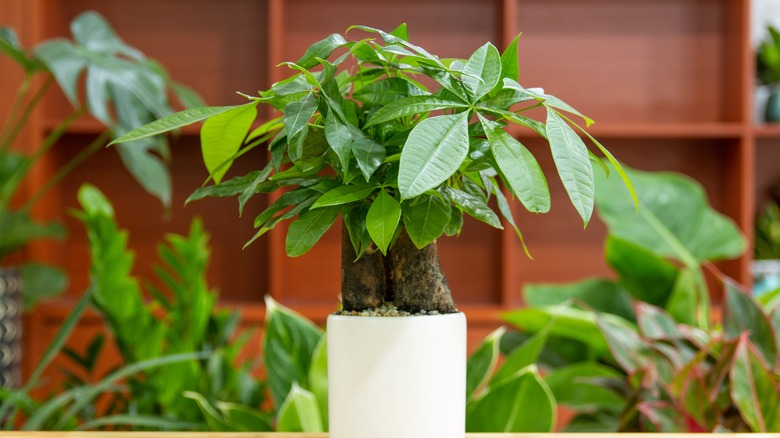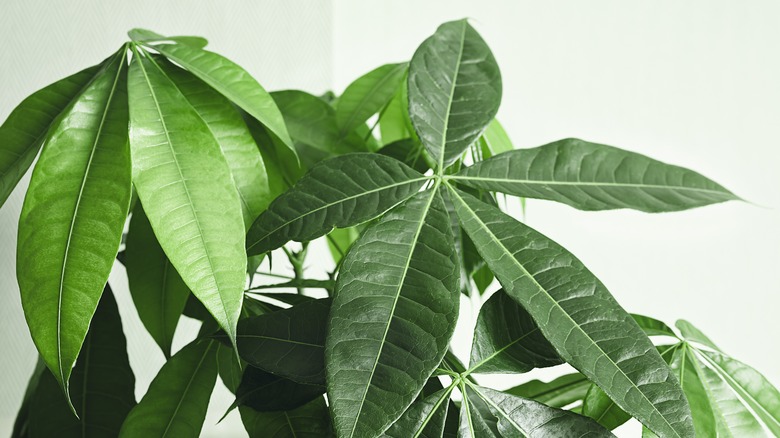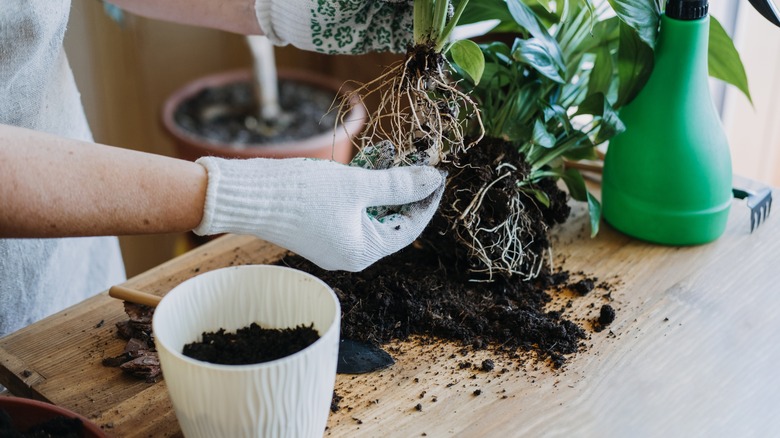Here's Why Your Money Tree Is Losing Leaves And How To Prevent It
Pachira aquatica, also known as the Guiana chestnut or money tree, is a plant originally cultivated in Central and South America. It's an incredibly popular choice for a houseplant thanks to its stunning full leaves, intricately braided branches, and bank account-boosting name. According to feng shui, placing a money plant in the correct spot of your home can bring fortune and wealth to the family, but even if you don't see any budging in your balance, you can enjoy this plant's power to transform a space aesthetically and bring some greenery to an otherwise-drab scene.
Unfortunately, there's always the risk of your live plants looking less than stellar once they're displayed. The money tree is a fairly resilient plant, but certain stressors can cause it to drop leaves and look sparse instead of lush and full. Luckily, there are ways to bring your money tree back to its healthy status, even after it appears to be facing certain bankruptcy.
Potential factors
If your money tree is dropping more leaves than seems healthy, you can be sure you're dealing with a plant that's stressed because of one or more environmental factors. The first step in reviving your plant should be checking three main areas of care: water, sunlight, and fertilization. There's no precise science when it comes to determining what the exact issue is — dropping leaves is a fairly common symptom — but by covering these bases, you're guaranteed to find something that's a bit off.
First, you want to start by feeling the soil. Your pot should have a proper drainage system, and if the first few inches of soil are sopping wet, you might be dealing with overwatering. The inverse can also be true — your soil shouldn't be bone dry, either. Next, the temperature. Money trees are plants that thrive in a warm environment, so try to keep them in an area between 65-80 degrees Fahrenheit and out of direct sunlight; they can be extremely sensitive to the sun, so bright but indirect light is key. Finally, if everything seems fine on the environmental front, you might need to look into your fertilization. Both under and over-fertilization will cause discoloration and dropping leaves, but over-fertilization will present with some wilting before they fall.
How to fix the issue
Fixing your money tree's falling leaves all depends on the diagnosis. If your plant is underwatered or in the wrong environment, these are simple switches. Up your watering schedule or crank up the heat a bit in your house — you'll likely see fuller foliage as a result. The same goes for fertilization. All you need to do is adjust your schedule and the amount of fertilizer you use to fix the problem. They usually only need nutrients once a month in the warmer months, so it's easy to go overboard.
When it comes to overwatering, however, it's a bit more of a difficult issue to treat. If your plant is dealing with root rot, you'll likely have to repot it. To do so, gently work your plant out of its existing pot, then trim away any mushy roots. Grab a new pot with proper drainage, then fill it with enough potting mix to place your root ball an inch below the edge. Fill in with more soil and stick to a more limited watering schedule, and your plant should begin to thrive.


